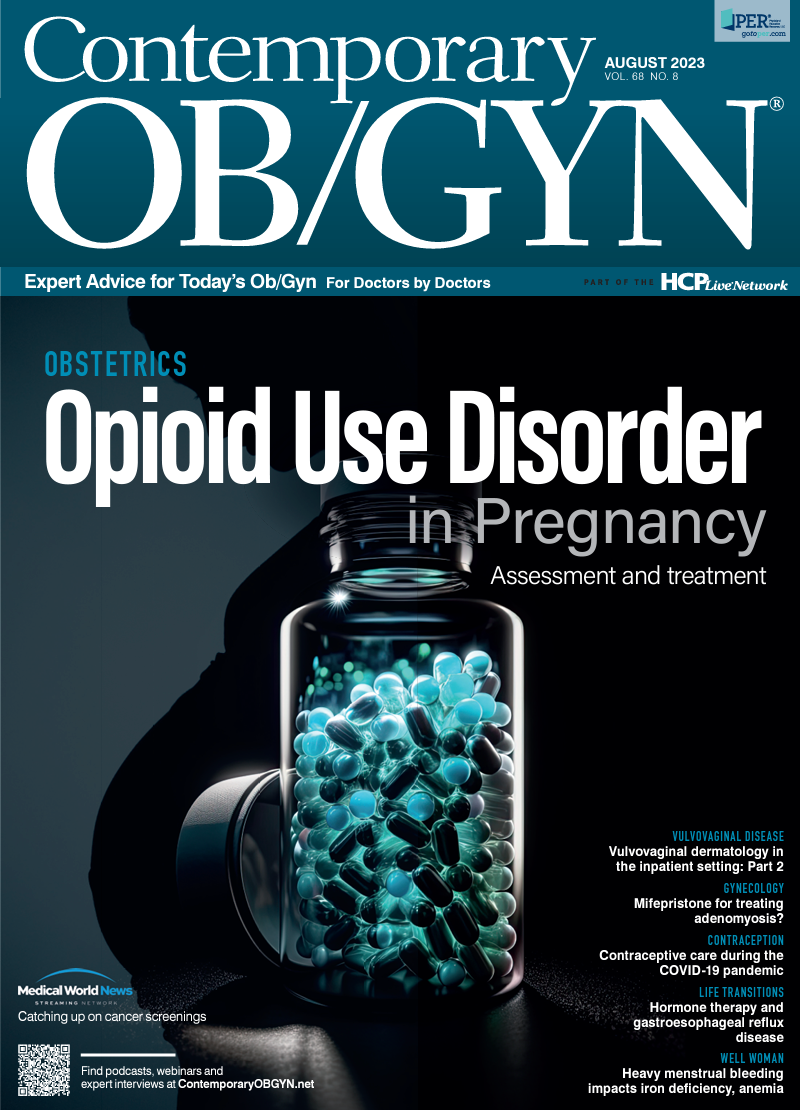Contraceptive care during the COVID-19 pandemic
Access to contraceptive care was lacking during the COVID-19 pandemic.
Contraceptive care during the COVID-19 pandemic | Image Credit: © Paolese - © Paolese - stock.adobe.com.

Less than 75% of reproductive-aged women in the United States seeking an in-person or a telehealth contraceptive visit during the COVID-19 pandemic had one, according to a social media survey published in the journal Contraception.1
Furthermore, Hispanic/Latinx women or those identifying as mixed race/other were much less likely to access either type of contraceptive visit. The same held true for women living in the South, Midwest, and Northeast.1
“As most people know, the COVID-19 pandemic profoundly impacted people’s ability to access health care in general, and those impacts were very unequal,” said first author Allison Merz-Herrala, MD, a resident physician in obstetrics and gynecology at University of California San Francisco. “Like so many health care providers across the country, we transitioned a lot of care to telehealth, including contraception.”
The authors discovered that telehealth provided opportunities for patients who otherwise might not have been able to access care—during the pandemic or not—due to other commitments or competing demands. “It seemed to us that some people truly preferred telehealth while others preferred coming to clinic in person,” Merz-Herrala told Contemporary OB/GYN.
Despite obvious limitations of telehealth for some contraceptive care, such as placing or removing long-acting reversible contraception, “a significant portion of contraceptive care can be provided via telehealth,” Merz-Herrala said.
Furthermore, as comprehensive reproductive health care becomes more challenging to access in some parts of the country, “it is essential that we understand how and where telehealth is being employed,” she said.
The authors wanted to investigate the following: Who was vs who wasn’t able to access contraceptive care during the COVID-19 pandemic? Who accessed telehealth vs in-person care? What was the quality of telehealth visits for contraception?
The survey was conducted during 2 months of the pandemic: July 2020 and January 2021. The mean age of the 5340 nonpregnant respondents who participated in 1 of the 2 months was 31 years. In addition, 54.1% of respondents were White, 58.7% were college educated or more, 56.7% had private insurance, and 63.6% experienced minimal impact on food security, housing, income, or job due to the pandemic.
Among the 1491 respondents interested in a contraception visit, only 73.4% reported any visit, of which 35.6% were telehealth.1
In adjusted analyses, lower odds of any visit were linked to Hispanic/Latinx women and those identifying as mixed race/other (adjusted odds ratio [aOR], 0.59 and 0.36, respectively). Women residing in the South, Midwest, and Northeast were also less likely to have any visit (aOR, 0.63, 0.64, and 0.52, respectively). Lack of insurance and greater COVID-19 hardship also negatively impacted the chances of any visit (aOR, 0.63 and 0.52, respectively). However, any type of visit was easier to obtain later in the pandemic (January 2021 vs July 2020 aOR, 2.14).1
In addition, respondents from the Midwest and South had lower odds of telehealth vs in-person care (aOR, 0.63 and 0.54, respectively). Hispanic/Latinx respondents and those in the Midwest also had lower odds of high telehealth quality (aOR, 0.37 and 0.58, respectively).1
“Our findings echo previous research showing that people with racialized and historically marginalized identities face disproportionate barriers to care,” Merz-Herrala said. “We need to make it easier for people to access contraceptive care. Overall, 26.6% of the sample indicated that they tried to make an appointment for contraception during the COVID-19 pandemic but were unable to. This is a huge number of people. We need to enhance our infrastructure nationally to increase access to care for everyone and especially for people with more financial and/or social barriers to care.”
The reasons for lower use of telehealth for contraceptive care in some parts of the country are not clear. Prior research findings published in The Journal of Rural Health showed that telehealth has been used less in rural vs urban settings in the South, possibly due to less electronic infrastructure.2 “Telehealth might especially benefit people living in the South, Midwest, and rural areas, as people in these areas often must travel long distances for in-person care,” Merz-Herrala said.
It is essential to increase efforts around knowing and understanding more about people’s preferences for in-person vs telehealth care and how to optimize telehealth quality, Merz-Herrala noted.
“Telehealth has the potential to increase access to care if employed in a way that is accessible to everyone,” she said. “Granted, not everyone has the ability to sit in front of a computer and have a live video meeting, but the vast majority of people seeking contraceptive care today have a phone and the ability to conduct a telephone visit.”
Results from at least one other study, published in the American Journal of Public Health, found a similar trend of the Hispanic/Latinx population reporting lower telehealth quality for contraceptive care.3 “However, we were unable to parse whether lower telehealth quality for the participants of either study could be explained by a language barrier or is related to other factors such as racism—both interpersonal and structural—implicit bias, or logistic factors like variation in internet access,” Merz-Herrala said. “This is a very important area for future investigation.”
The authors of the current study questioned whether the disparities they observed are due to differences in preference for telehealth vs in-person care or to differences in implementation of telehealth on the provider side.
“Although telehealth has the potential to improve access to care, inequitable implementation could exacerbate existing disparities,” Merz-Herrala said.
References
1. Merz-Herrala A, Kerns JL, Logan R, Gutierrez S, Marshall C, Diamond-Smith N. Contraceptive care in the United States during the COVID-19 pandemic: a social media survey of contraceptive access, telehealth use and telehealth quality. Contraception. Published online March 3, 2023. doi:10.1016/j.contraception.2023.110000
2. Beatty K, Smith MG, Khoury AJ, et al. Contraceptive care service provision via telehealth early in the COVID‐19 pandemic at rural and urban federally qualified health centers in 2 southeastern states. J Rural Health. 2023;39(1):160-171. doi:10.1111/jrh.12701
3. Lindberg LD, Mueller J, Hass M, Jones RK. Telehealth for contraceptive care during the COVID-19 pandemic: results of a 2021 national survey. Am J Public Health. 2023;112(S5):S545-554. doi:10.2105/AJPH.2022.306886

Recap on reproductive rights with David Hackney, MD, MS
December 20th 2022In this episode of Pap Talk, we spoke with David Hackney, MD, MS, maternal-fetal medicine physician at Case Western Reserve University and chair of ACOG's Ohio chapter for a full recap of where restrictions on reproductive rights have been and where they're going.
Listen
In this episode of Pap Talk, Gloria Bachmann, MD, MSc, breaks down what it means to be a health care provider for incarcerated individuals, and explores the specific challenges women and their providers face during and after incarceration. Joined by sexual health expert Michael Krychman, MD, Bachmann also discusses trauma-informed care and how providers can get informed.
Listen
NAID report shows maternal COVID-19 vaccination protects newborns
April 4th 2024New research led by the National Institute of Allergy and Infectious Diseases reveals sustained antibody levels in infants born to vaccinated mothers, underscoring the importance of maternal vaccination in safeguarding newborns against COVID-19.
Read More
